

Say Cheese: Making Memories with Purikura
|
Arcades in Japan can be a disorienting place. In the midst of the flashing lights and riotous sounds that emerge from the many machines that fill the space, serious and casual gamers alike gather to indulge in a large variety of games; friends can race one another, compete in matches of dexterity and skill, and even try their luck with claw machines. However, have you noticed a corner at these arcades dedicated to a different type of machine?
Purikura, or “print club”, refers to photo-booths that can print out stickers of photo portraits. Unlike traditional photo-booths, these uniquely Japanese machines allow for the user to print photo portraits set against backgrounds and frames selected by the user. The first of such standalone machines, known as purinto kurabu (プリント倶楽部) debuted in Japan in 1995. Its popularity boomed after it was featured on a television show, and soon other companies began manufacturing these machines. Unlike the flashier machines available today, early machines only offered a limited range of simple editing features. At first, only a handful of photo frames were available to be edited into photographs. Soon enough, companies were innovating the market with brand new features. By 1999, purikura machines had special pens that allowed users to write on and decorate their portraits, and even had skin-brightening features. Glittery and metallic prints were also made available in addition to matte and glossy ones. It was also around the turn of the millennium that machines started to come with the photo-booth area and decoration screen separate. This allowed for more high-quality and precise editing. Colourful messages and graphics could be added to the pictures; using the special pen attached to the machine, graphics can be placed precisely where the user wanted. The latest models of purikura machines may also feature exclusive graphics that are of a certain theme (such as princesses, or summertime). Some companies may even manufacture purikura machines made in collaboration with celebrities, allowing users to edit graphics of their favourite musician, model, and even comedians, to their portraits. |
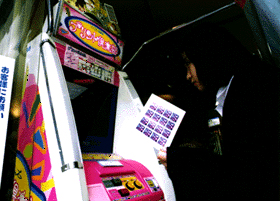 © Web Japan 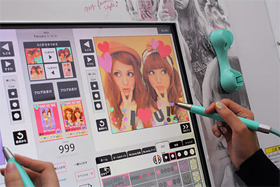 © MAKE SOFTWARE, INC. 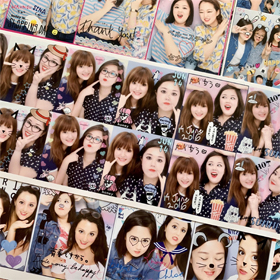 © JCC |
|
Besides these fun editing features, newer machines are also able to edit the users’ face. Using automatic processing functions, purikura can smoothen skin texture, and make certain figures larger or smaller as soon as the photographs are taken. On the decoration screen, mascara can be added to eyes, and rouge to cheeks and lips. Newer machines even have the ability to change the users’ hair colour. This means that even if you enter a purikura booth with a bare face, you can still end up with a portrait in which you have a full face of makeup!
Purikura are generally aimed towards women, especially teenagers and young adults. It is not uncommon for friends to make a stop at an arcade to take purikura each time they meet. As purikura are customisable, friends can commemorate special occasions by writing the date, or special messages when editing the portraits. These portraits can then be saved in special sticker albums or even traded amongst friends. These days, with the capability to transmit data from purikura machines to users’ phones, users can use them as phone wallpapers or even share them on social media. Although purikura machines used to be commonplace at youth hang-outs around Singapore, they are rarely seen now. However, the popularity of such machines seem to only be increasing in Japan. New models are released regularly, and the list of functions is ever-growing. The next time you visit Japan, turn your fun memories into souvenirs by piling into a booth with your friends to create your own purikura sticker portraits! |
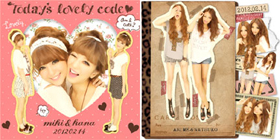 © MAKE SOFTWARE, INC. 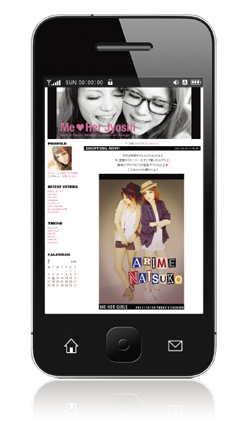 © MAKE SOFTWARE, INC. |
Resources
|
Hashi. (2013). Purikura: The Joy of Japanese Photo Booths. Retrieved 13 July 2020, from https://www.tofugu.com/japan/purikura/ |
|
Japan Creative Centre 4 Nassim Road, Singapore 258372 +65 6737 0434 / jcc@sn.mofa.go.jp https://www.sg.emb-japan.go.jp/JCC/ Nearest parking at Orchard Hotel & Delphi Orchard |
 |